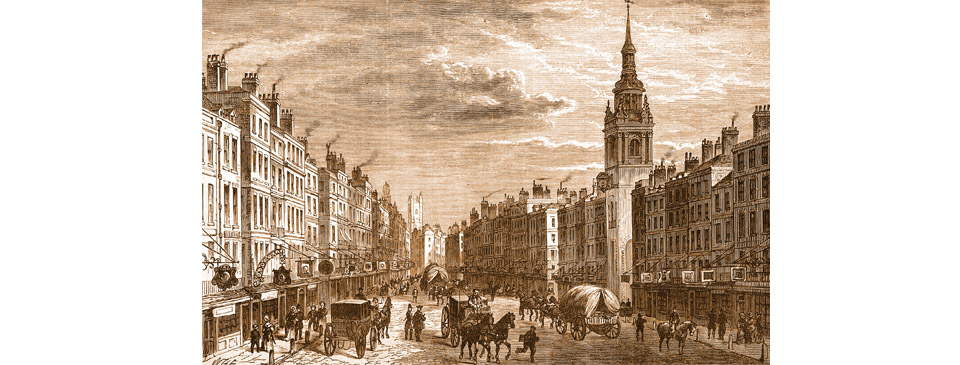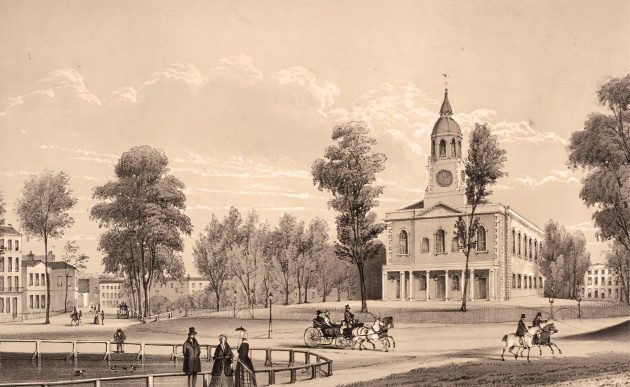In brief – London in the Georgian Golden Age

The busy Cheapside in the heart of the City of London in 1750, lined with shops and inns, and dominated by St. Mary-le-Bow church on the right.
George III took an interest in architecture, although not necessarily in grand schemes. He purchased Queen’s House – the former Buckingham House – at the western end of St. James’s Park in 1762 and had it altered into a town house where his growing library could be kept. From 1796 he had extensive work carried out at Windsor Castle, helping to increase the popularity of the gothic style. In 1804 Windsor became the main royal palace, where George and his family resided for most of the time.
Britain was at war from the 1740s until the 1760s and little major new building development took place in London, causing a housing shortage. With the end of the conflict landowners once again looked to profit by creating new estates. Henry Portman laid out Portman Square on fields to the north of Tyburn, the modern-day Marble Arch, becoming a fashionable address following the building of Home House. The development continued with the creation of the adjacent square on the land of the Duke of Manchester. Portland Place was laid out northwards towards Marylebone Fields from Lord Foley’s house, wide enough not to obstruct his views.
A series of Building Acts during the 17th and 18th centuries ensured ever-safer methods of house construction but also led to a large amount of uniformity within each street or square, particularly in working class areas where terraces of houses were required to be built at the minimum cost.
As London itself expanded so too did the villages around the capital. This was largely because of the growing middle class who could afford a country retreat away from the bustle and pollution, or those who simply did not need to be located within in the city. This process was helped by the improving state of the roads around London, making it possible to travel more easily and speedily from the countryside into the city by carriage. Some wealthy merchants, tradespeople or professionals had large individual country houses built, particularly in the second half of the 18th century.
A fashionable, new meeting-place opened in Oxford Street in 1772 to rival Vauxhall Gardens. The Pantheon, a large neo-classical dome, was lit by a thousand candles and said to be the wonder of the century and of the British Empire. Robert Burford opened the Rotunda attraction in the north-east corner of Leicester Square in 1794, showing Robert Barker’s landscapes and cityscapes. The exhibition was updated annually, establishing Leicester Square as a place of entertainment ever since.
A minor political crisis occurred in 1763 when John Wilkes, MP for Westminster, accused the King and his ministers of lying, allegations he printed in his newspaper North Briton. He was subsequently charged with libel and expelled from Parliament. Despite being repeatedly re-elected by his constituents he was barred from taking his seat in what many saw as a snub to the rights of the public.


